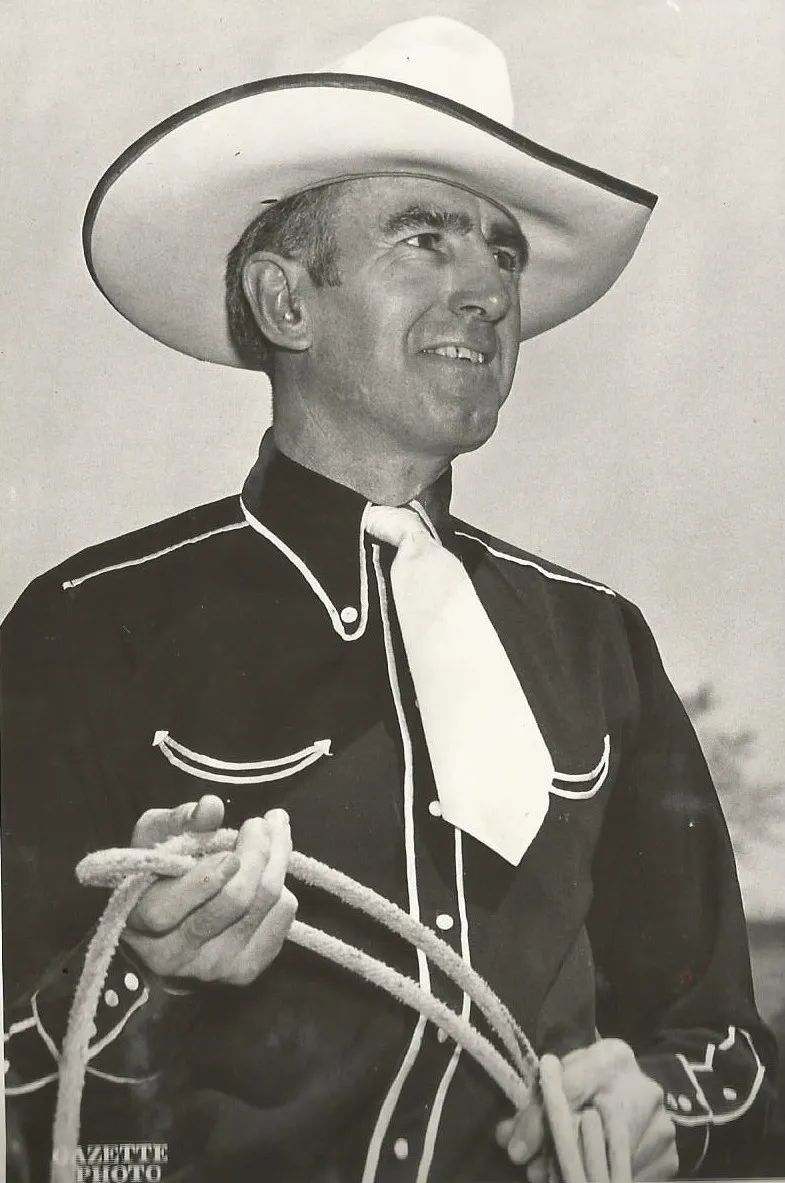
Legacy INDUCTEE
GEORGE ALBERT PITMAN
(1897–1976)
DISTRICT 3 - YEAR 2026
George Albert Pitman was born on January 4, 1897, in Middleboro, Massachusetts, to George and Etta (Norveille) Pitman. Though an East Coast native, George’s lifelong passion for horses and the cowboy lifestyle led him west, where he became a celebrated figure in Montana’s ranching and rodeo communities.
At just 15, George worked his way to Cuba on a steamship, where he lived and labored on a ranch, sharpening his cowboy skills. After a year, he moved to Alzada, Montana, to work as a ranch hand. His dedication and skill propelled him through various ranch jobs across Montana, eventually becoming a line rider and stock superintendent for the Northern Cheyenne tribe.
George’s rodeo career began with saddle bronc riding, calf roping, and bulldogging at regional events. Photographs from the 1919 Rosebud County Fair show him riding broncs, but it wasn’t until the 1923 Madison Square Garden Rodeo in New York City that he discovered trick riding and trick roping. Inspired by these performances, he decided to pursue this exciting new path.
In 1922, George built what is believed to be the first two-wheeled one-horse trailer in the western U.S., enabling him to travel extensively with a well-rested horse. By 1937, he upgraded to a custom-designed two-horse trailer built in Kalamazoo, Michigan. Unlike modern trailers, it combined horse transport by day with fold-down furniture for sleeping by night.
In 1924, George escorted Northern Cheyenne tribal members to South America to perform in a Wild West show under the 101 Ranch’s auspices. His passion for travel and performance saw him win trick riding and roping competitions at the 1933 Chicago World’s Fair and the World’s Contest in Pendleton, Oregon, the same year. This success led to his participation in the 1934 Tex Austin Rodeo in London, England, attended by the King and Queen, where he was honored as Reserve Champion.
George was a pioneer in trick riding and roping, inventing feats such as a headstand on the saddle horn, the backward one-foot slick stand, and a true somersault on horseback. He enhanced the Crupper Rollup maneuver (while mounted, the rider reaches back and grasps the crupper strap that loops under the horse's tail to prevent the saddle from slipping forward) and was known for his flamboyant rodeo attire. His custom shirts ranged from bright colors and polka dots to ribbon-made designs, including a patriotic red, white, and blue shirt for the Fourth of July. He also designed the first Eisenhower jacket from a Pendleton blanket, making him a rodeo style icon.
In 1938, George married Anna Grace Burns of Lame Deer, Montana, whom he taught trick riding. Together, they performed until 1945. George retired from performing with the belief that one should step down before declining. He remained active in rodeo as Arena Director for the Black Hills Roundup in South Dakota, directing their mounted quadrille for 14 years, and coordinating rodeos on the Northern Cheyenne Reservation.
Transitioning to full-time cattle ranching, George innovated livestock marketing and logistics. He built a landing strip for small planes to bring buyers directly to ranchers and constructed a livestock scale with a multi-level loading chute, revolutionizing cattle transport from the region.
George and Anna Grace lived and ranched in Lame Deer until his death on October 28, 1976. His ashes were scattered over the hills he loved. His legacy is honored with a permanent exhibit at the Rosebud County Museum in Forsyth, Montana, celebrating his contributions to trick riding, roping, rodeo, and ranching.
References:
Dean, Frank E. Trick and Fancy Riding. Academy Guild Press, 1960
A’tone, Northern Cheyenne Press, April 11, 1974
Middleboro, Massachusetts Newspapers, February 26 and April 10, 1937
Chaffin, Lorah B. Sons of the West. The Caxton Printers, Ltd., Caldwell, Idaho, 1941
Photo credit - Gazette

